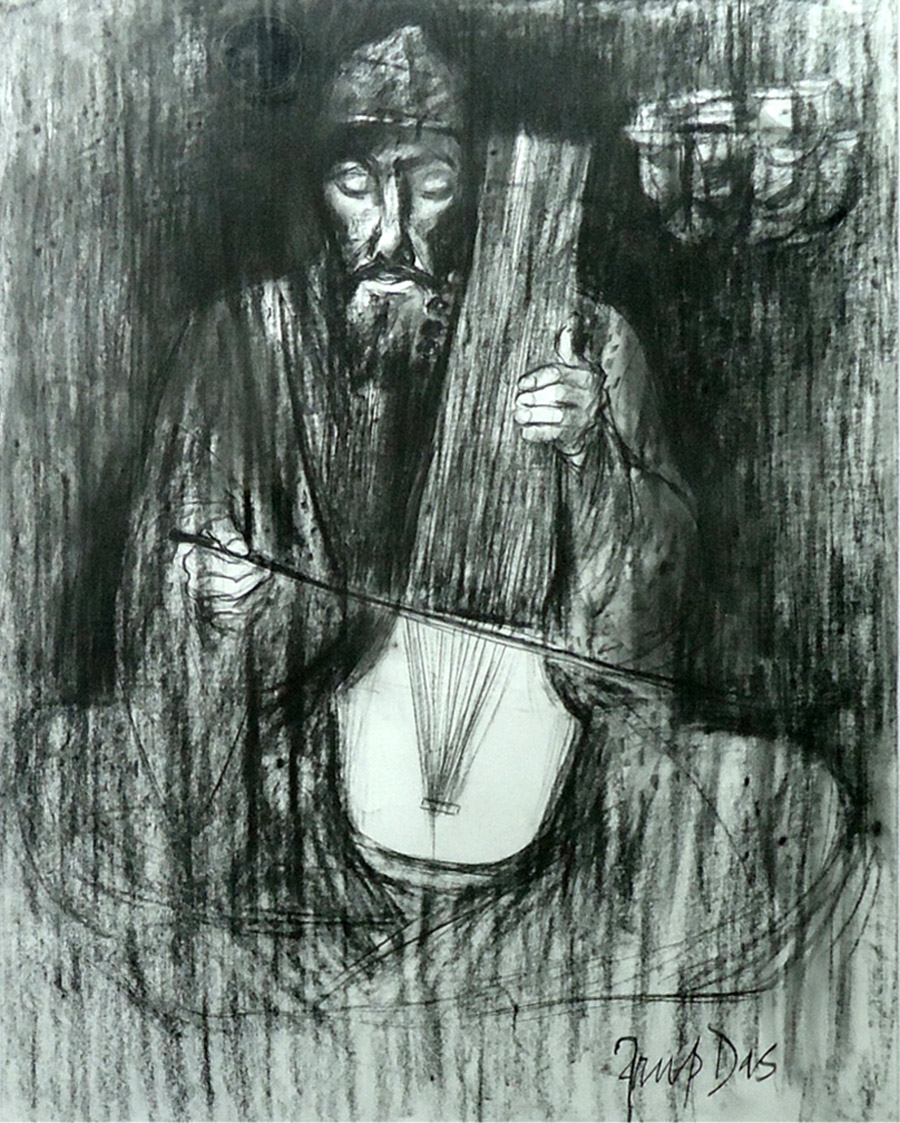
By Keshav Malik - 01 Oct, 1997
On Line
Ten years have gone since the moving spirit behind this oldest gallery went from our midst. It is good then to remember the part Mahender Jain played in giving his close attention to the making as the projection of works of art. At a moment of time when galleries are sprouting like mushrooms, or toad-stools, after a shower, it is with gratitude one thinks of any who, in the comparative wilderness of neglect espoused the cause of artists. Art dealing is not any other business, at least it was not till the other day. Then it was much more of a personalized world, artists and gallery persons were on intimate terms, even a near spiritual kinship. This precious quality has willy nilly begun to vanish from the scene, and exciting glitter and glamour and the ad-man's alluring suggestions have filled the emptied social space. I believe this spells an irreparable loss, but it is quite likely that some of those in a hurry to court the goddess Lakshmi will deem the 'master of business management' approach more profitable on every count. That as it may, some of us surely miss the personal touch of a person like Mahender Jain.
It is therefore appropriate for those who bear his mantle now to have thought of inviting such artists who have exhibited in the gallery to contribute non-colour, or charcoal drawings, for this anniversary. Evidently all of the invited responded with warmth and alacrity. This is all to the good, for it convinces us of the essential decorum of the artistic fraternity. Also that the gallery has thought of not putting up the usual works for the occasion shows a fine perception. Putting up unostentatious, even surfacially plain drawings, is like putting down all your cards on the table. It is just the right, honest move. It is good to go it unadorned, at moments at least. And these works test the mettle of each artist. What presentation of draughtsmanship does is to expose the backbone, the spine behind the patina of flesh and which last is really only mere appearance. When you remove this appearance, you meet with a different kind of life truth.
As I looked around at this body of work I chuckled to myself from time to time, and very often. Here, after all, was a kind of pure percussion, so to speak, that dance of lines of an expressive spontaneity, but never going wild. Furthermore there is much power in black. The black highlighted against the gleaming, immaculate white of the sheet. What could be more compelling? In this is the informality of a genre, and yet as well as studied showmanship, a fine performance.
I also believe, though, that no few of the artists would do well to draw out images in charcoal, and that not just for the sake of drill or calisthenics, but as I already implied, in order to be simple and spare. This may help bring austerity to an art scene which is besotted with too much of a gravy soaked rich curry. Bad for one's stomach, if indulged in too often.
Several artists' usual oil genres gain enormously by making a debut in this line, that is, by being minus colour finery. The heaviness vanishes in a trice in these cases, and one is astonished that the distress caused by gaudy, or dowdy oils, has gone, a toad turned into a prince charming.
A galaxy of artists is here, and but to give only a few instances, there is Satish Gujral the greatly spirited one, and then there is the dreamy Ganesh Pyne, and Jatin Das of the dancing line, and the staid and still suhas Roy. All these and the others bewitch us by their, perhaps, impromptu performances. The works hang together and make a unified enough statement, that of the line followed by the dots. Lines that thrust up explosively like crocus tufts, or like rockets or leaping athletes, or that float and sail like a crow leaning on the wind; lines that spread like calm water or swirl like struggling eddies or droop like wet hair or weeping willows. All can be eloquent in themselves. And, as and when, the artist uses the line to express his feelings about men and women, trees and mountains and water etc. etc., there is doubly a joy in the wavy line with all its subtleties of inflection. It can then become an eloquent vehicle for his perception of some aspects of nature, or human nature.
Thus these works have good lines, and these lines are not only in pencil or charcoal but all sorts of other lines of direction or movement, the vital lines of growth or perspective and the lines formed by the edges and silhouettes. When brought together into a work these lines can often be in sympathy with the main rhythm of the design.
some of the best works here deal with the lowliest material. But still this humble material achieves a greatness when transmuted by a rhythm that makes them worthy company for any most extravagant fantasy or monumental epic, much as the human imagination can conceive and depict. Perhaps P.N. Choyal and Arup Das's works are cases in point. All however are in fact in search of a rhythm that leads them away from the merely spectacular, the banal, the obvious, into unexpected byways and untrodden fields of thought and delight. In sum there is little that is stale or over familiar over here.
(Written for the catalogue of the exhibition The Enduring Lines, remembering Mahender Jain on his tenth anniversary)

